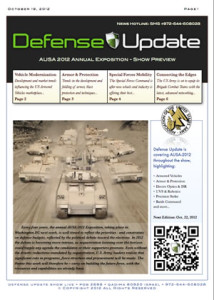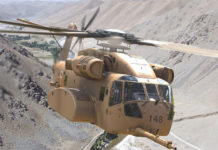
Another area facing a temporary slowdown is the ballistic and blast protection. In past years, armor manufacturers were relatively small and specialist companies that supplied armor products to prime contractors like GDLS and BAE Systems. This has changed in the mid 2000s, as the US raced to build armor-protected vehicles to counter the growing threats in Southwest Asia. Bigger ones acquired smaller specialists, and prime contractors obtained their own capabilities, expanding production volumes. Now, as the demand for armor is reduced, smaller, specialist manufacturers that leverage lower production volumes could once again have the advantage, pursuing new opportunities to supply lighter and more effective protection to growing threats. The planned selection of prime contractor for the Ground Mobile Vehicle (GMV 1.1) for the Special Operations Command could represent such opportunity. These manufacturers could also benefit from a small but steady demand for armor replacement kits, replacing worn out or obsolete applique armor ‘B-Kits’ with new and lighter materials are introduced, offering more benefits to the user.

Another growth area is the long neglected blast protection. Blast mitigation features such as belly plates, blast protecting seats and paddings, are introduced as part of combat vehicle reset and modifications, enhancing ballistic protected vehicles with blast-proof designs protecting the occupants from excessive accelerations caused from IEDs and mines. Blast protection is not limited to the vehicle, but also extend to the warfighter’s own gear – helmet, boots and combat suite.
Effectiveness in military means deployed forces are well prepared, equipped, informed and connected – the key for all these is excellent leaders and superior command and control. Advanced, broadband networking, intelligence gathering, particularly at the tactical level, where timely dissemination of data is critical, is essential for success.
While the regular and reserve forces are to be reduced, the investment in Special Operations is expected to grow, as these forces are viewed as more effective and efficient in dealing with ‘low profile’ with international challenges. Since they usually operate covertly, their failures remain secretive while politicians quickly attribute to their successes. For industry, Special Forces contracts will also become important again, after years where mainly small niche players addressed these smaller, low-volume programs.
The following topics are covered in our preview:
- Vehicle Modernization Programs
- Armor and Protection
- Special Forces Mobility
- Precision Fires
- Better Force Protection
- Connecting to the Edge
- Supporting the warfighter
These articles will be opened for all readers on Defense-Update on Sunday (21/10) and are currently available in the downloadable PDF format.
This issue is offered to Defense-Update readers as a complimentary preview issue. Forthcoming reports from the exhibition will be available nightly from Defense Update in web & PDF format, providing excerpts for all readers and full features for our paid subscribers.
You are invited to Subscribe Here!

















